One of the perennial problems with film photography is getting through an entire roll of 36 exposures in a reasonable amount of time. Film photography isn’t like digital, where it’s common to go out for a day and shoot hundreds of frames (“Spray and pray,” as some of my digital photographer friends call it). Film photography encourages a more deliberate approach, taking care with each exposure. Which means that it can take a very long time to shoot an entire roll of 36 photos. I developed a roll yesterday that had pictures of rain in our neighborhood, and it hasn’t rained in months.
If you’re shooting black and white, it’s reasonably easy (and usually cheaper in the long run) to buy 100-foot rolls and a bulk loader to create your own short rolls. I often do this, rolling 10 or 12 frames that I can shoot on a morning stroll or bike ride.
With color, it’s more difficult. Color film, based on my hunting around, is virtually impossible to find in bulk, leaving us with 36-, 24-, and (less commonly) 12-exposure rolls. As would be expected, the shorter rolls are cheaper: Amazon sells a roll of 36-exposure Kodak Gold for $16.50, and the same film in 24 exposures for $9.99. They don’t offer it in 12-exposure rolls, but you can find them online if you hunt around.
I’ve found an easier way to get short rolls and save money at the same time: Re-rolling 36-exposure rolls. Converting one roll of 36 into three shorter rolls saves at least $10 in my experience, compared to buying three 12-exposure rolls.
Here’s how I do it:
First, I hunted around on eBay and bought a used bulk loader. I bought a Lloyd’s Daylight Film Loader because I’m familiar with it (I use them for hand-rolling black and white film) and because it lacks the geared frame counter on some other brands. I don’t need those gears, and they would just complicate things. Used bulk loaders are easily available for about $20 on eBay, although you could probably find one cheaper if you hunt around. A new one will run you upwards of $50. Based on savings in film, you can easily recoup the cost of a used loader.
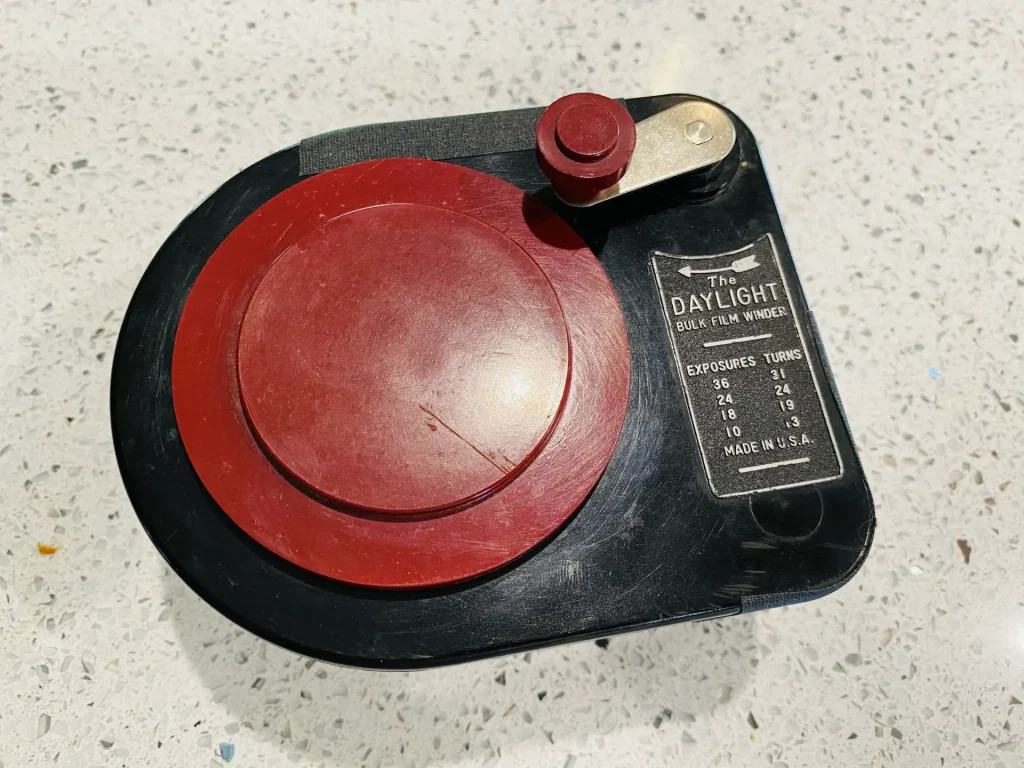
With my bulk loader and a roll of 36-exposure film in hand, I remove the top from the loader and then insert the film leader into the slot. Then (leaving the cover off) the loader, film and the top of the loader go into a dark bag.
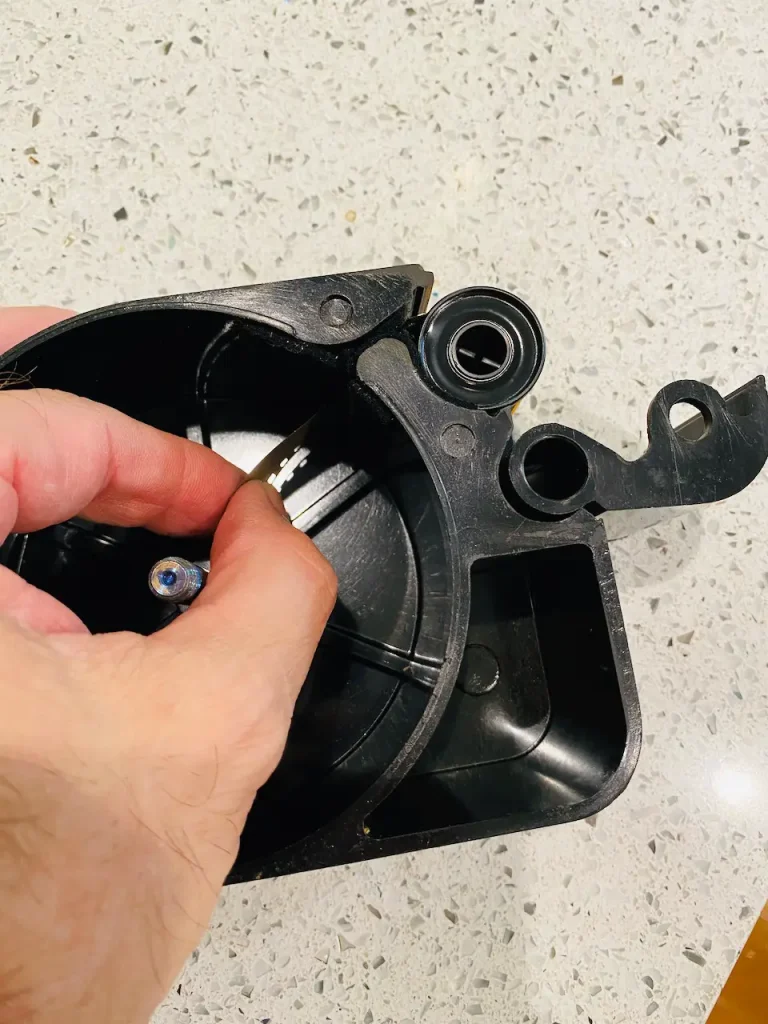
While in the dark bag (I don’t have a darkroom), I carefully feed the film from the cassette into the bulk loader with my fingers (reverse of the usual direction), taking care just to touch the edge of the film and making sure it coils around the stem in the center of the bulk loader cavity. Once that’s done, I replace the top and tighten it down. I also close the cover over the canister (I can wait until it’s out of the bag to insert the winder handle). Now the whole thing can come out of the dark bag.
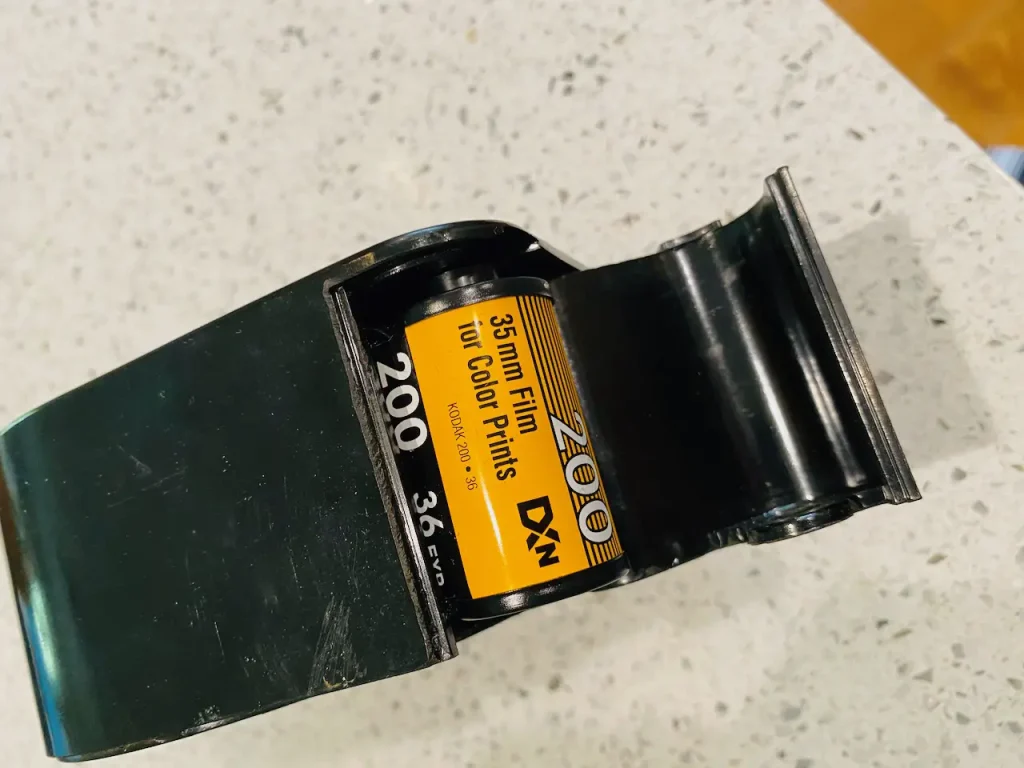
Back in the light, I now have an empty film canister with film attached ready to roll. Following the directions on the loader, I wind ten frames back into the canister (13 turns of the handle with the Daylight loader) and cut the end of the film to create an end for loading into a camera. Once I’ve shot those ten frames, I develop the film and reload the canister (although any will work) with another ten frames.
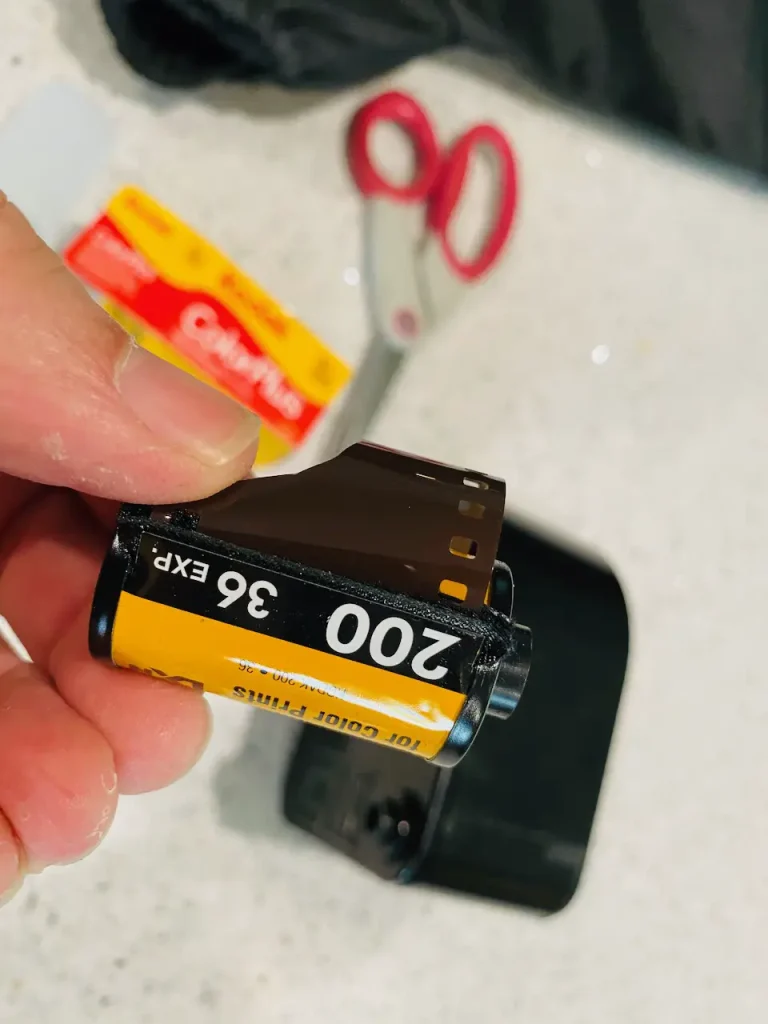
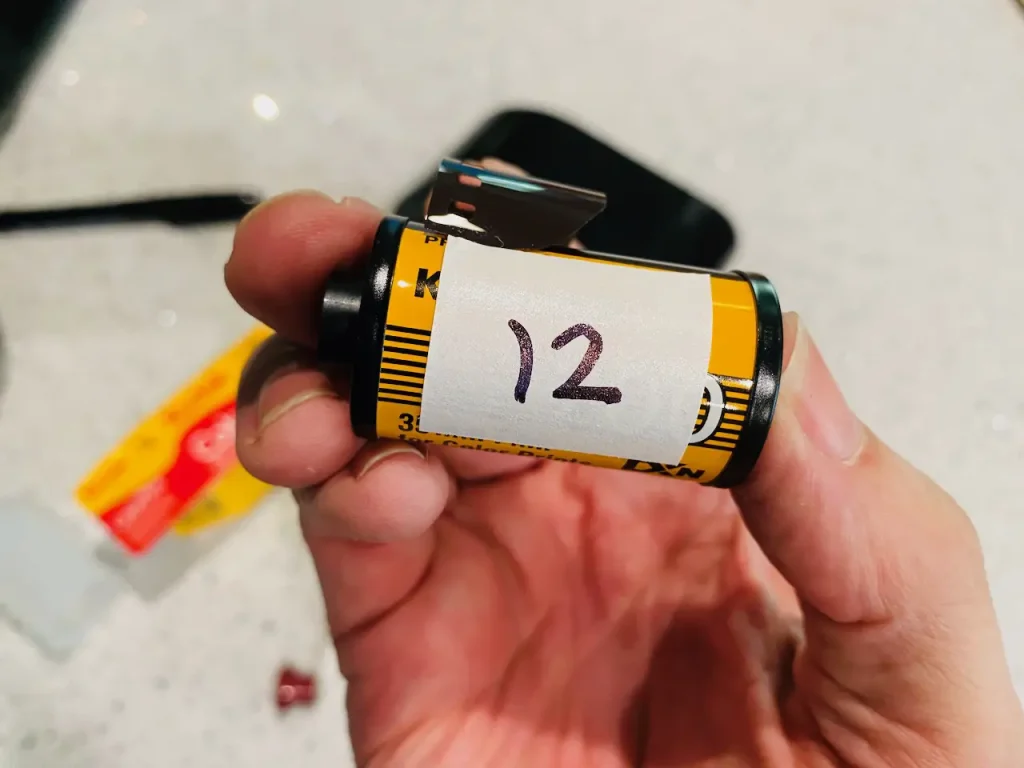
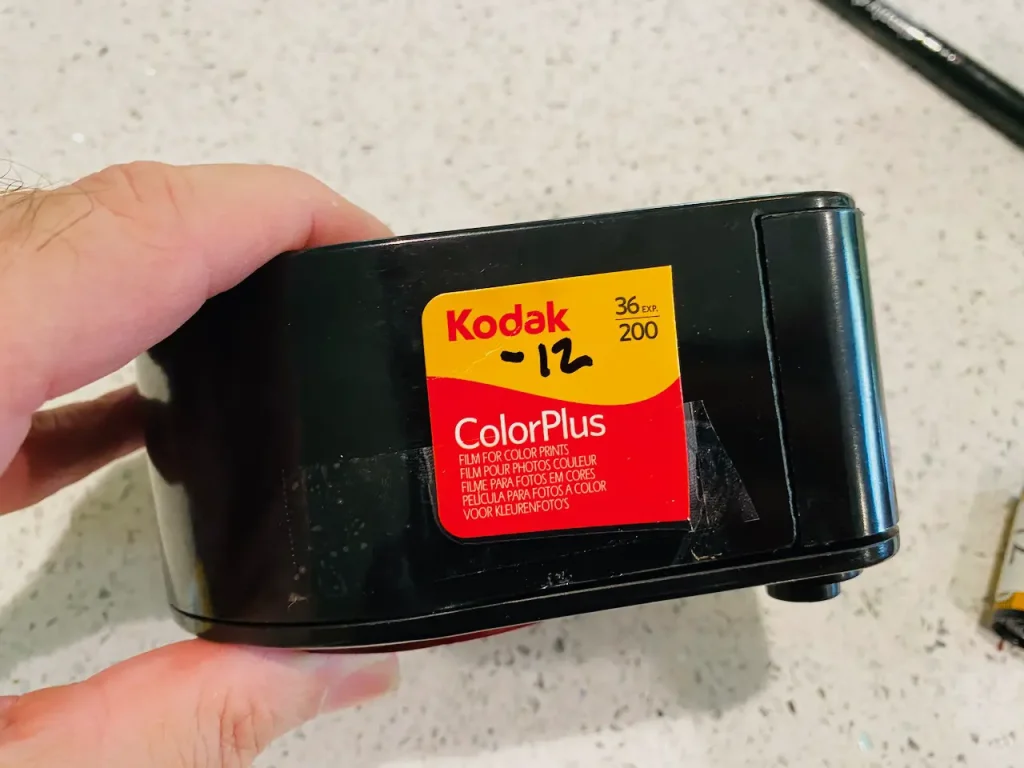
A few tips:
- I’ve found that it works best to split a roll of 36 into three 10-frame rolls. There’s a certain amount of waste involved in hand-rolling film–the small ends that are exposed to light during the rolling and cutting process–that adds up quickly. If I roll two 12-exposure rolls, I end up with a too short third roll.
- When re-rolling film like this, I create a shorter leader on the film than I normally would, to preserve as much film as possible for shooting.
- I tape the end of the film box on the outside of the bulk loader and mark on it to keep track of how much film is left inside.
Re-rolling film like this is easy, saves a few dollars per roll, and gives me rolls that I can shoot and develop in a day or two, rather than weeks. Give it a try!
I shot film almost exclusively, 35mm and medium format. I enjoy working with everything from box cameras to point-and-shoots. See my photos (including some from shortened rolls) on my Instagram page: campyonlyguy
Share this post:
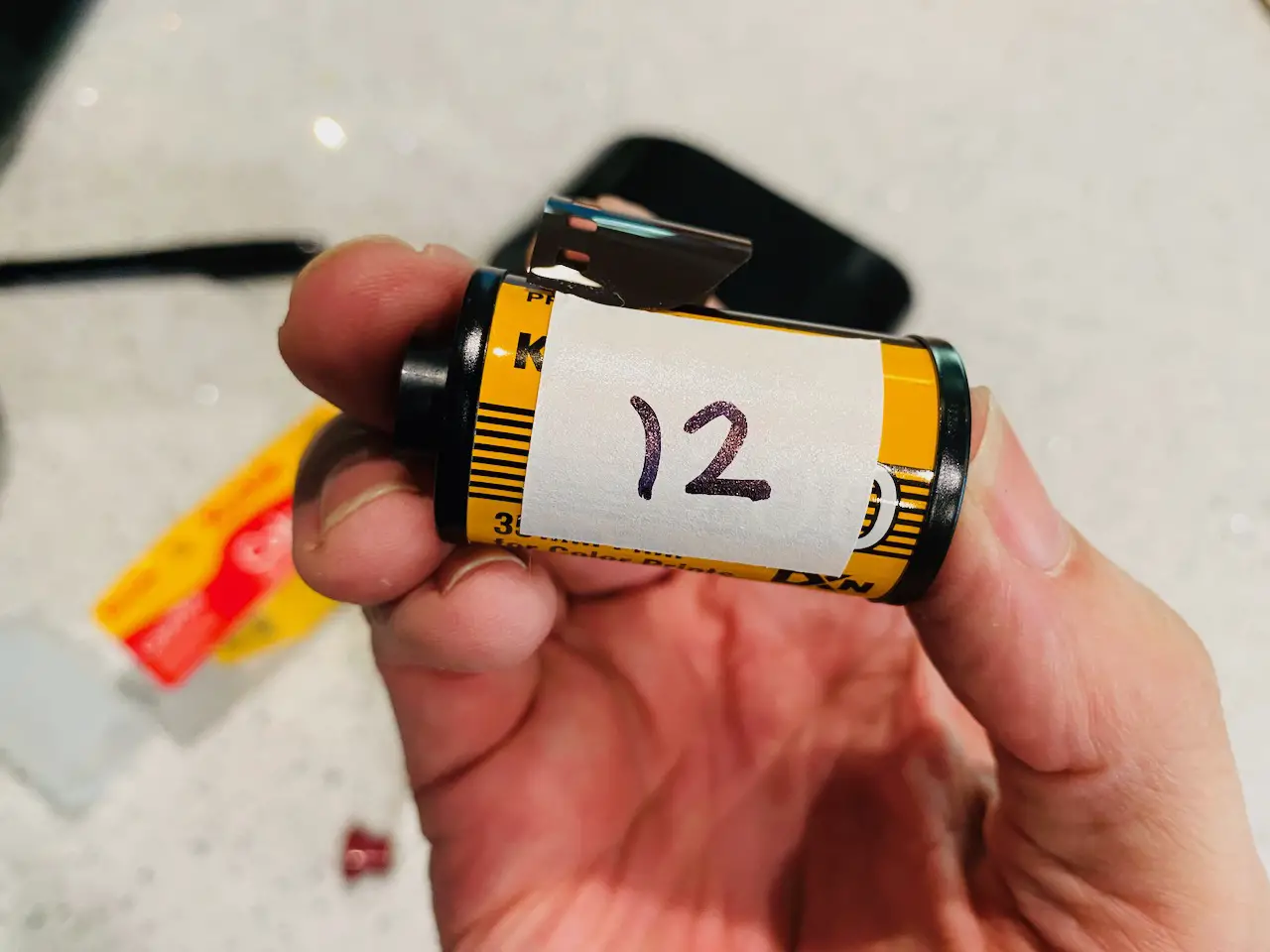








Comments
Shubroto Bhattacharjee on How I Make Three Rolls of Film From One – By Eric Norris
Comment posted: 11/11/2020
Paul Mulherin on How I Make Three Rolls of Film From One – By Eric Norris
Comment posted: 11/11/2020
Another way of shortening your rolls would be to explore shooting with a medium format camera and 120 roll film as they only have about 10-12 exposures if memory serves?
Comment posted: 11/11/2020
Neal A Wellons on How I Make Three Rolls of Film From One – By Eric Norris
Comment posted: 11/11/2020
I also have the too many exposures problem, especially since I shoot a lot of 35mm half-frame with 72 exposures per roll. Even though I pay less than $6 in the U.S. for the same 36 exposure roll of Kodak Gold (plus shipping that goes down very low per roll because I buy multiple rolls), I still often want to look at a photo expedition before I finish the whole roll but save the rest of the film.
I develop my own, like you and just put the film tank into my changing bag plus the film and scissors. In the dark, after advancing a frame or two, I open the camera, snip the film, and load onto the reel and into the developing tank.
Next I open the bag and the unused film is waiting to be loaded onto the take up spool (with a snip of the corner to make it fit in the slot.)
This way, my developing tank is ready to develop and I don't need a bulk loader. I put a piece of blue masking tape on the bottom of the camera with the film type and approximate number of exposures left.
Comment posted: 11/11/2020
Kounos on How I Make Three Rolls of Film From One – By Eric Norris
Comment posted: 11/11/2020
Comment posted: 11/11/2020
Philip on How I Make Three Rolls of Film From One – By Eric Norris
Comment posted: 11/11/2020
I’ve never used mine, but you’ve inspired me to try it.
Comment posted: 11/11/2020
c.d.embrey on How I Make Three Rolls of Film From One – By Eric Norris
Comment posted: 11/11/2020
Shooting three rolls of 36 for 72 frames total, is a normal session for me. I usually shoot motor-sports, rodeo or surfing for fun.
I'd be interested in knowing how man people would actually buy 12 or 18 shot 35mm rolls? Color negative or chromes?
Comment posted: 11/11/2020
Adrian on How I Make Three Rolls of Film From One – By Eric Norris
Comment posted: 11/11/2020
Comment posted: 11/11/2020
Daniel Castelli on How I Make Three Rolls of Film From One – By Eric Norris
Comment posted: 12/11/2020
About a year ago, I returned to bulk loading HP-5. I usually load rolls w/15 exposures (because that number works for me.) Now, during the pandemic with travel curtailed and minimal daily outings, the short exposure rolls are just enough to keep me shooting and engaged in the darkroom. The down side to this approach is that it takes just as much developer to process a 15 exposure roll as a 36 exposure roll.
I'm a retired photo teacher. For awhile, Ilford offered 12 exposure 'press' rolls in a 50 roll pro pack. They were perfect for my entry level b&w photo class. Students could shoot a roll in a short period of time and have negatives ready for the darkroom. They were a win-win for us.
Marc on How I Make Three Rolls of Film From One – By Eric Norris
Comment posted: 12/11/2020
Usually, it takes months to finish a 36 Roll, or even 1-2 Years. Last May, i made a Trip with Friends to a well known Cemetery,
and i thought to shoot at least two full Rolls....hence 72 Exposures....but i made just 21 exactly, into half the Day...when suddenly,
the Film Advance of my FX3 Super 2000 become stuck. I like Angel Statues, and Cemetery Statues into General way much.
Good Light.
Huss on How I Make Three Rolls of Film From One – By Eric Norris
Comment posted: 12/11/2020
Do you mean a 3 pack of film? Surely not a single roll for $16.50? My local shop sells that for about $5.
Comment posted: 12/11/2020
Comment posted: 12/11/2020
Comment posted: 12/11/2020
Comment posted: 12/11/2020
Comment posted: 12/11/2020